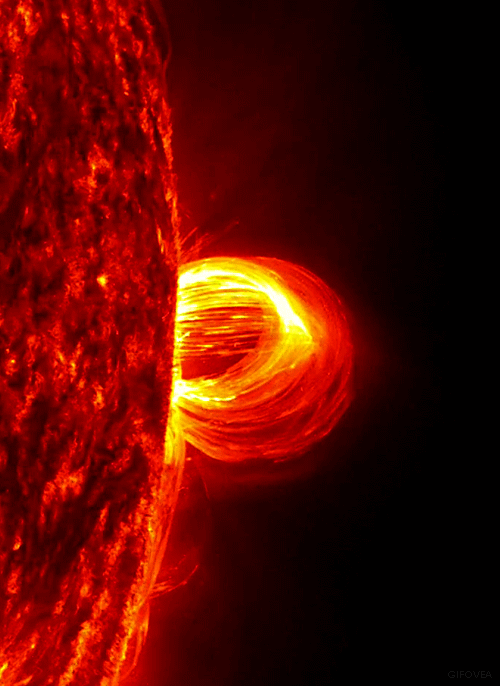Colleen Conway-Welch (1944-2018) Was An American Nurse, Known For Her Public Health Advocacy And Numerous

Colleen Conway-Welch (1944-2018) was an American nurse, known for her public health advocacy and numerous projects. She served as Dean of the Vanderbilt University School of Nursing for almost 30 years.
She received her doctorate from New York University and went on to work in various hospitals and universities throughout the United States. Under her leadership at VUSN, the university introduced an accelerated master’s programme and a PhD programme. She was named a Living Legend by the American Academy of Nursing.
More Posts from Thejoyofscience and Others

(Image: U. Müeller)
New neurons (in green) are guided to the neocortex - responsible for controlling language and movement - not by glial cells, but by a protein called reelin.
Journal reference: Neuron, DOI: 10.1016/j.neuron.2011.01.003
For decades, scientists have been capitalizing off discoveries made from Henrietta Lacks’ family’s cells. That may change.


Aspirate of a mammary mass from a 8 year-old, female-intact, Yorkshire Terrier. The patient was found wondering in a field by a good Samaritan-turned-owner over the 4th of July weekend. Although she was acting normally, the owner brought the little dog in for a ‘look over.’ On physical examination a 2cm mass was felt in the left mammary chain. No obvious spay scar was present.
*
On cytology there were copious clusters of epithelial cells. These epithelial cells (top picture) were very non-descript, making for large, jumbled piles of cells. Notice how you cannot see any well-defined cell borders between them?? Just a ton of nuclei (and nucleoli) blending in together! That’s a sign of cell craziness! Many clusters were surrounded by this gorgeous, pink-magenta material. Likely secretory product or matrix.
*
Cytologic diagnosis: Mammary tumor! Although the cells look quite malignant on cytology, many studies have shown you cannot reliably determine malignancy with cytology alone. Thus, you NEED a biopsy to determine if a mammary tumor is malignant or benign in a dog. And flip a coin on that - about 50% are malignant and 50% are benign. Intact female dogs have an almost 35% lifetime chance of developing one of these beasts!

Sofia Ionescu (1920-2008) was a Romanian neurosurgeon, thought to be one of the first female neurosurgeons in the world.
She studied medicine in Bucharest, and in 1943 became part of the first team of Romanian neurosurgeons. She continued practicing the profession for almost five decades and received numerous awards for her lifesaving work.
underappreciated form of humor: using incorrect long forms of proper names i.e. Craigory, Bobert, Barold, etc.
Hitchhiking bacteria might help their host navigate via magnetic fields
Deep in the mud of the Mediterranean Sea, scientists have caught microscopic protists dancing to a strange beat—the beat of Earth’s magnetic fields. Now, a new study reveals how these tiny clusters of cells orient themselves along those fields: by letting magneto-sensing bacteria hitch a ride on their outer membranes.
Researchers used microscopes to examine protist-packed sediment taken from the bottom of the Mediterranean Sea near Carry-le-Rouet, France. When they placed a magnet with its north pole facing a water droplet from the sediment, the hundreds of protists inside immediately began to swim toward the droplet’s edge. When the researchers reversed the magnet so its south pole was facing the droplet, the protists fled in the other direction (above).
-
 ultimatemomfan reblogged this · 6 years ago
ultimatemomfan reblogged this · 6 years ago -
 red-wiz-man reblogged this · 6 years ago
red-wiz-man reblogged this · 6 years ago -
 red-wiz-man liked this · 6 years ago
red-wiz-man liked this · 6 years ago -
 makingmywaves liked this · 6 years ago
makingmywaves liked this · 6 years ago -
 scarpicturethatiwishisaw liked this · 6 years ago
scarpicturethatiwishisaw liked this · 6 years ago -
 loriferrara2 liked this · 6 years ago
loriferrara2 liked this · 6 years ago -
 funkyfrom liked this · 6 years ago
funkyfrom liked this · 6 years ago -
 stripedsilverfeline reblogged this · 6 years ago
stripedsilverfeline reblogged this · 6 years ago -
 stripedsilverfeline liked this · 6 years ago
stripedsilverfeline liked this · 6 years ago -
 justanoldfashiontumblog reblogged this · 6 years ago
justanoldfashiontumblog reblogged this · 6 years ago -
 justanoldfashiontumblog liked this · 6 years ago
justanoldfashiontumblog liked this · 6 years ago -
 esta-cosa-es-toxik liked this · 6 years ago
esta-cosa-es-toxik liked this · 6 years ago -
 leptoquark3 liked this · 6 years ago
leptoquark3 liked this · 6 years ago -
 mikeptlx reblogged this · 6 years ago
mikeptlx reblogged this · 6 years ago -
 shesasupergeek liked this · 6 years ago
shesasupergeek liked this · 6 years ago -
 its-funny-til-its-not liked this · 6 years ago
its-funny-til-its-not liked this · 6 years ago -
 persistr liked this · 6 years ago
persistr liked this · 6 years ago -
 seriever liked this · 6 years ago
seriever liked this · 6 years ago -
 bokchoynomad liked this · 6 years ago
bokchoynomad liked this · 6 years ago -
 qwan007 liked this · 6 years ago
qwan007 liked this · 6 years ago -
 discoevsky reblogged this · 6 years ago
discoevsky reblogged this · 6 years ago -
 mayothefirst liked this · 6 years ago
mayothefirst liked this · 6 years ago -
 fishingpenguin liked this · 6 years ago
fishingpenguin liked this · 6 years ago -
 the-sofa-king-awesome liked this · 6 years ago
the-sofa-king-awesome liked this · 6 years ago -
 wdhl liked this · 6 years ago
wdhl liked this · 6 years ago -
 yesitsanusha reblogged this · 6 years ago
yesitsanusha reblogged this · 6 years ago -
 yesitsanusha liked this · 6 years ago
yesitsanusha liked this · 6 years ago -
 eve-made-the-right-choice reblogged this · 6 years ago
eve-made-the-right-choice reblogged this · 6 years ago -
 eve-made-the-right-choice liked this · 6 years ago
eve-made-the-right-choice liked this · 6 years ago -
 whoknowswhereorwhen liked this · 6 years ago
whoknowswhereorwhen liked this · 6 years ago -
 hawkandco liked this · 6 years ago
hawkandco liked this · 6 years ago -
 confusedinthetardis liked this · 6 years ago
confusedinthetardis liked this · 6 years ago -
 ionegao liked this · 6 years ago
ionegao liked this · 6 years ago -
 animafantome liked this · 6 years ago
animafantome liked this · 6 years ago -
 ms-angels-class reblogged this · 6 years ago
ms-angels-class reblogged this · 6 years ago -
 ms-angels-class liked this · 6 years ago
ms-angels-class liked this · 6 years ago -
 deviousthinkers reblogged this · 6 years ago
deviousthinkers reblogged this · 6 years ago -
 deviousthinkers liked this · 6 years ago
deviousthinkers liked this · 6 years ago -
 phrk156 liked this · 6 years ago
phrk156 liked this · 6 years ago -
 woahtherebuddypalguydude liked this · 6 years ago
woahtherebuddypalguydude liked this · 6 years ago -
 thejoyofscience reblogged this · 6 years ago
thejoyofscience reblogged this · 6 years ago -
 passionate-peony liked this · 6 years ago
passionate-peony liked this · 6 years ago
An assortment of scientific things from the wonderful world of biology
77 posts




